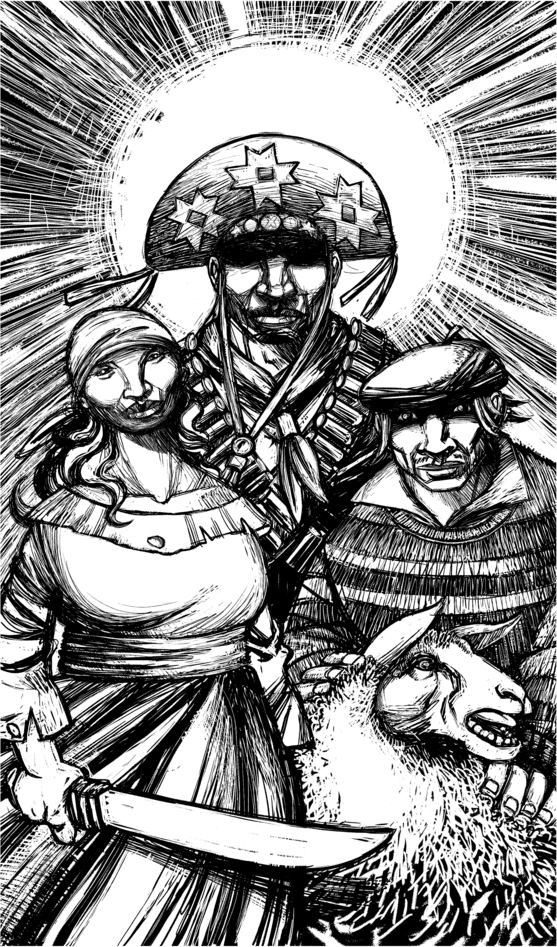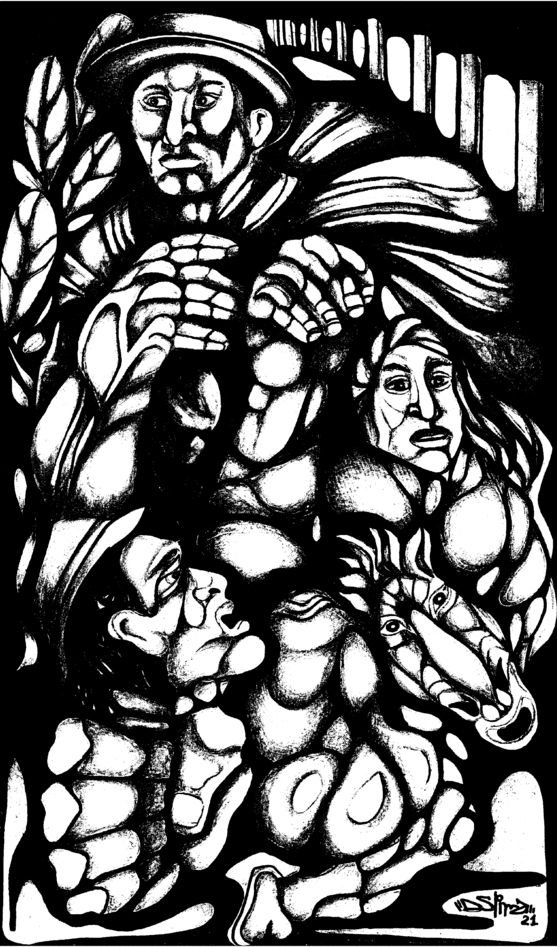
.
COFFY UPRISING GUY
EL SOCORRO COMMUNARD UPRISING COL
ORURO REBELLION PER
European colonial rule implied extremely harsh conditions for the peoples of Abya Yala. Mining and the plantation model meant environmental destruction, slave labor and dispossession for the native and enslaved populations brought from Africa. Some of the earliest pockets of struggle centered on land. Coffy, a West African slave, led a revolt of 2,500 blacks in 1763 that put the Dutch authorities on alert. Another oppressive mechanism, which mainly affected small farmers, was the levying of heavy taxes, which provoked, for example, the Communard Rebellion in El Socorro (present-day Colombia) in 1781.

.
ZAMORA-LED UPRISING VEN
CANGACEIROS BRA
REBEL PATAGONIA ARG
The new Latin American republics, although founded with liberal ideals, did not radically change the social divisions imposed by colonialism. They consolidated small elites that thrived on the exploitation of the great majorities. With industrialization processes still lagging, it was in the countryside where the greatest inequalities were expressed, but it was also there that pockets of struggle and resistance emerged to challenge the landed oligarchies from the second half of the 19th century onwards. Groups such as the Cangaceiros in Brazil took justice into their own hands, becoming of folklore legends, while in Venezuela, Ezequiel Zamora and his peasant army lit the fires of rebellion. Rural movements were also precursors of union organization. One of the most important episodes of these struggles was the “Patagonia Rebelde,” a series of large strikes by rural workers, mostly sharecroppers, brutally repressed by the Argentine government in the 1920s.

.
BANANA GROWERS’ STRIKE COL
1932 CAMPESINO UPRISING SAL
UNITED FARM WORKERS USA
Throughout the 20th century, the United States established itself as the world’s leading imperialist power, expanding its influence mainly in Latin America. U.S. multinational corporations had every advantage, including the support of Washington and puppet governments in several countries in the region. Rulers were imposed or set aside depending on their loyalty to corporate interests. But resistance from below soon emerged in those “banana republics” where actors like the United Fruit Company acted with impunity. The Banana Massacre in Colombia (1928) and La Matanza in El Salvador (1932), in which Farabundo Martí was executed, are examples of peasant insurrections brutally repressed by the governments at the time. But also in the U.S., farm workers, mostly Latin American migrants, rose up to demand their rights. César Chávez was the most recognized leader of the United Farm Workers, the union that staged some of the largest strikes in U.S. history in the 1960s.

.
CAMPESINO ROUNDS PER
Click or touch to enlarge BOL
LANDLESS WORKERS MOVEMENT BRA
The arrival of neoliberalism and the adoption of the Washington Consensus did not resolve one of the main and historical contradictions of Latin American societies: the unequal distribution of land. As a result, the impetus for some of the region’s progressive governments in the last 20 years came from the countryside. An example of this were the coca growers in Bolivia. At the same time, various peasant collectives have become bastions of resistance against the anti-popular projects of the far right. In Brazil, the Landless Movement (MST) continues to be at the forefront of the struggle for a fundamental right: the land belongs to those who work it.









